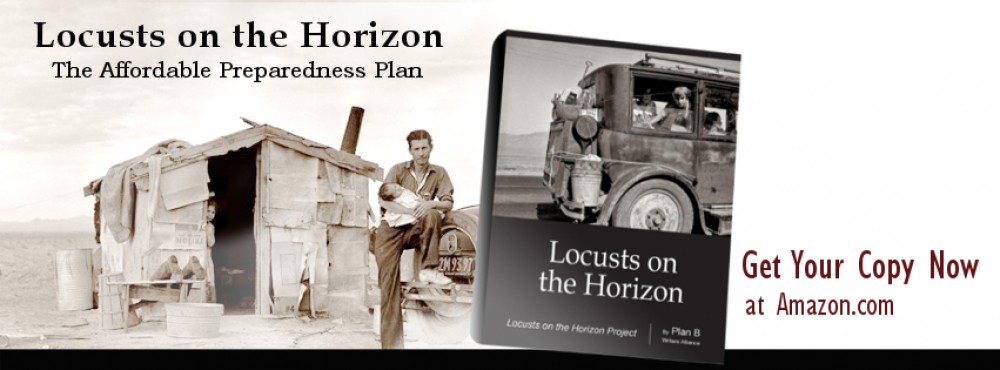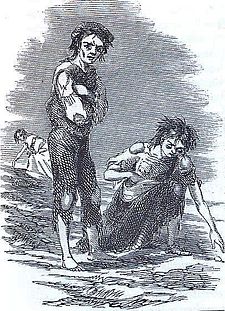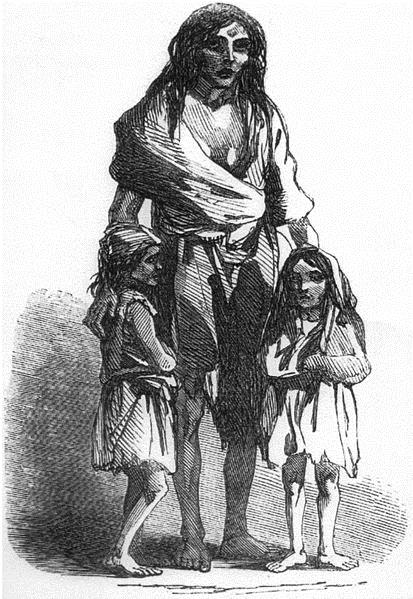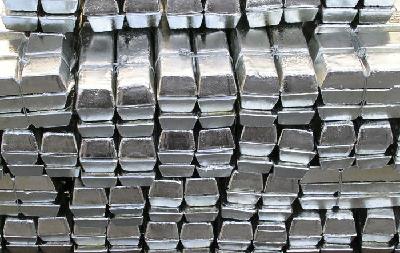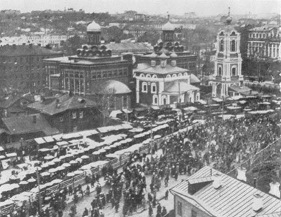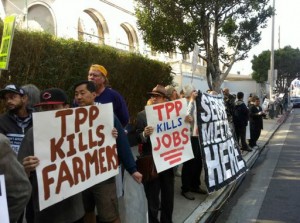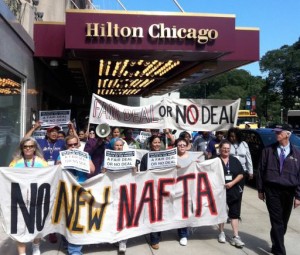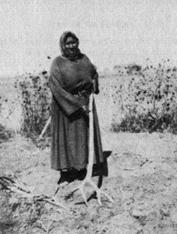By Plan B Writer’s Alliance – LocustsOnTheHorizon.com
At this time in the course of things, most everyone has read numerous articles and books about a severe crisis occurring, a worst case scenario. They use terms like ‘SHTF’ (S*** Hits The Fan) and other acronyms like ‘TEOTWAWKI’ (The End Of The World As We Know It) or ‘WROL’ (Without the Rule Of Law).
A common speculation by many is that civilization as we know it will collapse, the government just won’t be there, and most people will die from the hoards of the starving, unprepared ‘sheeple’ acting in fatal desperation as they pour out of the cities, ravaging the countryside. This has been a constant theme of ‘survival’ talk since the 1960’s and Hollywood itself took this train of thought and ran with it, making movies like Mad Max and it’s kind.
However, a universal truth is stated in the Bible where it says, “What has been will be again, what has been done will be done again; there is nothing new under the sun”. (Ecclesiastes 1:9)
So, when the Plan B Writer’s Alliance took on the ‘Locusts on the Horizon‘ project, we all did a lot of research on what really happens during a severe crisis. What we found, after studying many these events is that all too often, these popular perceptions, common to preppers and others, is more of a creation of Hollywood than reality.
THE NON-VANISHING GOVERNMENT
One thing history shows is that governments seldom just disappear unless destroyed by brute force due to an invading army or a revolution. Even then, they are usually replaced by another authority with armed men to back them up. In fact, governments in a severe crisis typically become harsher and much more willing to use brute force. More often than not, the government not conveniently disappearing is actually a significant part of the problem which people during any prolonged crisis are commonly faced with.
No economic crash alone has ever destroyed a modern government and it’s bureaucracy, leaving a country in a state of pure anarchy. This is the case no matter how bad it gets, even to the point of the complete destruction of the national currency. Such events just makes governments more brutal and willing to bend or ignore their own laws.
This is true even with countries that have had to lop more than twenty two zeros off of their inflated currency (Zimbabwe, land of the $110,000,000 bottle of beer), or governments that had to simply abandon their currency and issue a new currency pegged to the currency of a foreign nation (Yugoslavia circa 1994). In post WWI Germany, the inflation was so bad at one point that housewives were heating their homes with bundles of worthless money. Yet, the country didn’t turn into Mad Max. Eventually, however, they did wind up with a dictator and an overly forceful government.
Famines don’t destroy national governments either. There is always some food to be had, and the first at the dinner table are always the ruling elite plus the troops and enforcers which keep them in power. There are a couple of good examples of this, one being how chubby and well fed Mao and his cohorts stayed during the Great Famine of China (aka ‘The Great Leap Forward’). Another was how Lenin and his ruling elite stayed fed and warm in Moscow during the famine winter of 1919-1920.
One thing we found is that rural people in a fixed location often suffered worse than those in the cities during a famine. A key reason for this is that all too often what tends to happen is that the government first restricts travel, especially into and out of the cities. They essentially lock down their power base. Cities are usually a power base, farms seldom are. The government then sends an overwhelming force of well armed troops and enforcers into the countryside to strip it of food, like locusts, and bring it back to the cities.
Does that mean the cities are the best place to be during such a crisis. Absolutely not. Cities in such conditions tend to have their own, special, mixed bag of misery ready to dish out to everyone.
If you look at the executive orders of the US Federal Government and the preparations they have been making (the US Federal Government is the Ultimate Prepper), it’s become apparent that this plan to restrict travel and locust the countryside is what they plan on doing if things look like they might get too bad.
After all, it’s been done before, and it works. Have you noticed how modern freeways these days look like they were designed to be traffic choke points to restrict travel if necessary?
That is because they are. You can seal off and heavily restrict travel into, and out of, most major American cities nowadays with a surprisingly small number of well armed troops.
THE DIE-OFF RATE
One of the assumptions we have encountered a lot is that there will be a huge, mass die-off. A die-off rate of 80% to 90% is often speculated for such events.
So, let’s look at some of these horrific events that have actually happened and see how much of a population die-off they actually had.
What kills most people in the world, crisis or not, are two things, hunger and disease. This is typically the case even during the middle of a war.
In Somalia, an artificial country created by retreating colonial powers, the central government was destroyed in a tribal civil war, and different regions fell under the sway of one warlord or another. The well publicized famine which accompanied this event killed 4.6% of the overall population. As typical in these events, the very old and the very young were hit the hardest, and 10% of that country’s children under the age of five perished.
The Holodomor in the Ukraine, a horrific, artificial famine engineered to kill as many Ukrainians as possible, killed 25% of the population. The Great Hunger in Ireland in the 1840’s saw that country’s population reduced by about 25%, with about 1.5 million killed and another million emigrating on ships. In China the famine of 1958-1963, which is the worst famine on record, killed approximately 45 million people, which was about 4% of that country’s population at the time.
History shows that during times of famine, most people have died at home or in their villages, and the rest were often limited in their mobility. This was because by the time it became apparent that they needed to leave to search for food, they were either too weak to travel, or the government was restricting travel at the muzzle of a gun. People who are starving have a very limited range which they can travel before physically giving out.
One of the scarier trends that became apparent while studying multiple famines is just how rapidly cannibalism starts to appear during times of extreme hunger. Oddly enough, history has shown that cannibalism and modern civilization seem to be capable of co-existing during a crisis, and they are not mutually exclusive.
On the website SHTFschool.com a man named Selco talks about how he survived the one year Siege of Sarajevo in the 1990’s. It was horrific and his insights are very valuable. The urban misery caused by a military siege of a city is in a class by itself. As human caused events go, a city under long term military siege is about as bad as it can get in a city, short of hitting it with a nuclear weapon. It has the combined effects of an economic crash and a famine, plus the nasty extras that come with war.
The one year Siege of Sarajevo was nasty, complete with famine, the loss of electrical power for most people, and a complete breakdown of public utilities, the medical system, and law and order. Of the city’s estimated population at the time of the siege of about 380,000 people, 11,541 died, which was a die-off of roughly 3% of the total population.
The worst die-offs often come from disease, especially contagious pandemics. Pandemics typically kill more than wars do.
The worst pandemic to ever hit Western civilization was a bacterial infection commonly known as the bubonic plague (the ‘Black Death’) which peaked in the mid-1300’s. That pandemic killed about 33% of the population of most of Europe, though some regions were spared, most notably Iceland and Poland.
A more recent, notorious pandemic, the Spanish Flu of 1918, swept the world rapidly and killed an estimated 3% to 5% of the world’s population at the time.
The deadliest, widest ranging war fought to date was World War Two, which killed an estimated 72 million people. That was about 3.27% of the world’s estimated population in 1938.
HUMAN RESILIENCE
One of the big assumptions that are made when discussing a severe crisis event is that people will enter a state of animalistic panic and they will stay that way till they die a miserable death from being unprepared.
When events initially start, it’s not uncommon for people to panic at some point, such as if they suddenly realize at that something bad and unexpected is about to effect them and they feel unprepared to meet that threat. Examples of this would be things such as an enemy army is coming, or they find out they might not get any more food from a supermarket or an emergency aid center, and they have nothing stored.
A classic example of panic amongst a large number of people creating a nightmarish situation is what happened during the ARVN evacuation of the Central Highlands near the end of the Vietnam War. Another classic panic example was the Fall of Saigon at the end of that war. Both of these, like the majority of the horrific evacuation stories in history, were typically not a result of economic collapse or famine, but of war and it’s aftermath, such as the mass relocation of Germans after WWII, or the forced march of ethnic Chinese out of Vietnam after the Fall of Saigon.
Panic, however, does not last indefinitely in those stricken with it. Panic is the result of a human survival mechanism, one of several built into all of us, and it’s only temporary.
As any crisis wears on, there comes a point in these events where things like hunger and exhaustion kick in. Then human adaptability combined with the individual cleverness inherent to the human critter overrides panic and mindless fear. Then people adapt, and adapting is what the human critter is all about. This is one of the key reasons why there is usually a definite curve on the death toll in such events, especially those that drag on a while. Humans can be very resilient and resourceful when pushed hard enough.
THE MOST DURABLE CULTURES
One of the things which leaps out to us from history is the answer to a question, “What is the most durable, adaptable lifestyle, especially in a crisis?” The answer to that was very clear, “Nomads.”
Throughout history, nomads have usually weathered a severe crisis better than those around them, and they are typically very adaptable, both in mental outlook and in lifestyle. This is also why they are some of the oldest surviving cultures still existing. Because they are adaptable they can use or discard both new or old technology as they see fit. Because they are durable as a culture, their traditions and family households have survived generation after generations.
This is true whether they are the Bedouins of Arabia, the Sea Gypsies of Burma, or the herders of Mongolia. Most of all, they have also been the freest people on Earth. A mobile people are a free people, and they are usually the hardest segment of any nation’s population for authoritarian governments to track or control.
This is why we took the path that we did with ‘Locusts on the Horizon‘. If the situation remains a economic crunch, then people will still have a dwelling for their household for any length of time pretty much anywhere, and a means to travel to find work. If it gets really bad, at the first whiff of it, families so equipped can retreat to as remote and inconspicuous of area as possible, maybe even banding together, several families at a time if need be. This is also a plan your average, middle class, working family can actually, realistically afford to do.
However, best of all, it gives a lot of good people their best shot at remaining alive and free when events take a turn for the worst. History has shown us that not only do these events occur periodically, but they are quite survivable, even if all you have going for you is dumb luck. History also shows that even a basic level of preparation, planning, and foresight can dramatically increase your odds of pulling through, or even prospering in such events, while simultaneously greatly reducing your potential for misery.
© Plan B Writer’s Alliance – Permission to copy and reprint this article is given so long as reference to the original author and the website http://www.locustsonthehorizon.com are mentioned.
